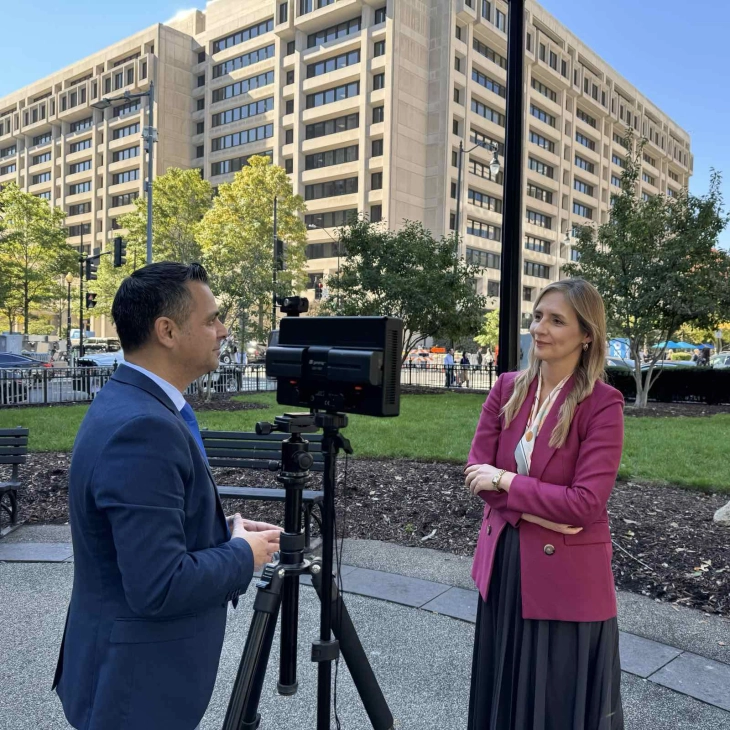Angelovska-Bezhoska: Denar remains stable, foreign exchange reserves up by 40 pct in five years
- The denar remains stable with its stability guaranteed by the high level of foreign exchange reserves, which continue to grow despite numerous shocks, reaching 4.4 billion euros at the end of September. The current reserves are 40% higher than pre-pandemic levels, amounting to around one billion euros more, which is a considerable rise, especially in years marked by unprecedented challenges, said Anita Angelovska-Bezhoska, Governor of the National Bank, who is participating at the IMF and World Bank Annual Meetings.

Skopje, 24 October 2024 (MIA) – The denar remains stable with its stability guaranteed by the high level of foreign exchange reserves, which continue to grow despite numerous shocks, reaching 4.4 billion euros at the end of September. The current reserves are 40% higher than pre-pandemic levels, amounting to around one billion euros more, which is a considerable rise, especially in years marked by unprecedented challenges, said Anita Angelovska-Bezhoska, Governor of the National Bank, who is participating at the IMF and World Bank Annual Meetings.
She noted that these are positive trends, reflecting further strengthening of the overall macroeconomic policy and stability of the domestic currency.
“The more favourable external conditions, particularly in the field of foreign direct investments, which amounted to 500 million euros for the first half of the year, are key reasons. This also demonstrates the stable expectations of domestic economic entities,” Governor Angelovska-Bezhoska said in an interview with Voice of America.
Speaking about inflation, Angelovska-Bezhoska emphasized that, both globally and in our country, we are witnessing more stable inflation movements, that is, a stabilization of inflation.
“There are two reasons for this, first, the significant stabilization of primary commodity prices, especially energy and food on global markets, the second factor is the central banks’ management of these inflation movements. As a result of these factors, the latest data in our country points to a significant reduction of inflation pressures. According to the data on average inflation from the beginning of the year through September, it stands at 3.3% and is broadly in line with the National Bank’s forecasts for an average annual rate of 3.5% for 2024, as well as the latest IMF forecasts of 3.3% average inflation. However, I would still emphasize that risks remain, and careful policy management is needed in the period ahead,” she noted.
As reported by the National Bank, referring to the conditions in the banking sector, Angelovska-Bezhoska underscored that despite the shocks in the past period, the stability of the banking system was maintained, and its resilience even increased, as seen through various indicators. According to her, the capital adequacy ratio, which is an indicator of the solvency of the banking system, reached 19 percent, the highest rate in the past two decades, while the quality of banking instruments has significantly improved.
Photo: National Bank











